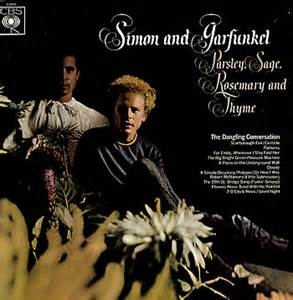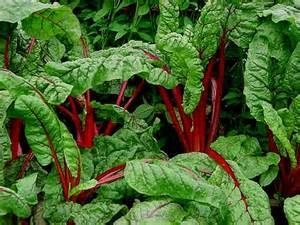
You would have been completely justified in comparing me to a broody hen at this point. Spritzing with water three to four times a day, covering and uncovering to keep the seedlings warm and rotating the trays to ensure good light coverage only briefly describes my actions.
A long-planned trip occurred during my “broody” period and I was nervous about passing the reins to my husband. He did well. I do not think that he had to make an emergency run to the nursery to replace any plants.
Upon returning from my trip, the thinning transpired without a hitch. However, I could not bear to waste the thinnings so I teased them apart and planted them as well. When the workshop date finally arrived, I was like a new mother, so proud of my baby kale.
If you would like to try your hand at a winter garden, here are some tips. Choosing the correct plants is the first step. Plants like corn, peppers and cucumbers are killed by frost; they are for summer gardens only.
Plant cool-season crops so they mature in spring or fall. Some of these crops are damaged by frost; others are not. The hardier options can survive temperatures of 25°F to 28°F.Edibles in this category include broccoli, Brussels sprouts, cabbage, collards, English peas, kale, kohlrabi, leeks, mustard greens, parsley, radish, spinach and turnips. Frost actually makes collards, spinach, cabbage and kale sweeter.
Semi-hardy plants prefer temperatures between 40°'F and 50°F and tolerate light freezes for a few hours. These vegetable include beets, carrots, cauliflower, celery, Chinese cabbage, endive, potatoes, lettuce, radicchio, rutabaga, salsify and Swiss chard. Most cool-weather edibles do not like temperatures above 75°F. With heat, they tend to bolt, which means they stop producing and set seed.
Keep winter's short days in mind. Make sure your winter garden gets at least five hours of sunlight. Remove weeds and any other unwanted vegetation. Break up the soil and amend with compost or planting mix if needed.
Starting seedlings in smaller pots, as opposed to direct-seeding them in the ground, gives you more control over their care and progress. You don't need to be as neurotic as I was. Once planted, seedlings should not be disturbed and should be kept moist. Root vegetables like beets and turnips do not transplant well and prefer to be direct-seeded. Thin them as they sprout. They need room to spread and grow.
Use a balanced fertilizer and follow package directions.Check the forecast. If it is going to be partly cloudy with mild temperatures, that's a good time to transplant. If hot days are forecast, postpone until the weather cools.
Keep seedlings watered until nature takes over. A thick layer of mulch keeps roots cool, conserves water and controls weeds. Protect young seedlings from our Indian summer heat. I use cute paper umbrellas but floating row covers work as well.
Watch for pests, whether it's the family cat that loves the feel of carrot seedlings under its tummy or slugs and snails. The University of California Agriculture and Natural Resources web page has abundant information on how to control or correct common gardening problems. I laughed when one of my friends said that she does not wear her glasses when she harvests to avoid seeing aphids on the plants.
I am still a vegetable-gardening beginner but I highly recommend the experience. I get so much satisfaction from watching a tiny seed grow into a productive plant.
Garden Tour: The Master Gardeners of Napa County invite you to attend their sixth garden tour, “Down the Garden Path,” on Sunday, September 13. On this self-guided educational tour, you will see seven gardens owned by Master Gardeners in and around the City of Napa. These gardens illustrate how Napa County Master Gardeners use University of California research-based horticultural information to develop and maintain their own gardens. Tickets: $30 advance / $35 day of event. Purchase tickets here: http://bit.ly/1fqLJZe. Or you can purchase tickets at the Master Gardener office (address below). For more information, call 707-253-4143.
Workshop: Napa County Master Gardeners will present a workshop on “Cool-Season Vegetables” on Saturday, August 22, from 9:30 a.m. to 11:30 a.m., at the University of California Cooperative Extension office, 1710 Soscol Avenue, Napa. Discover the joy of a vegetable harvest from your own garden in fall, winter, and early spring before those summer vegetables would even think of growing. Topics include soil preparation, watering, fertilizing, harvesting and managing pests.Online registration (credit card only)Mail-in registration (cash or check only). The Napa Master Gardeners are on Facebook.

Vines throughout the valley are progressing through a process called veraison. Veraison is a French word signaling the start of the ripening process.Changes occur throughout the vine during this phase, but most importantly, veraison is when berries begin to ripen.
During veraison, berries become soft and take on the characteristic colors of the variety.Cabernet Sauvignon and Merlot grapes begin to change from green to red. From veraison until harvest, the berries will increase in size, weight and sugar content.The canes change from green to a woody brown,developing the strength needed to carry the weight of the grapes.
While veraison progresses, commercial and home growers take steps to protect the crop before harvest. Beginning with bud break in the spring, grape growers must constantly manage powdery mildew (Uncinulanecator) and botrytis (Botrytis cinerea).
In many vineyards, the spores that cause powdery mildew and botrytis are ubiquitous.A powdery mildew infection appears as a blue fungus on individual berries or bunches. Botrytis affects the internal tissues of the berry or the entire bunch. Berries split and fungal spores can proliferate. In both cases, home gardeners should remove and dispose of infected bunches to prevent wind from spreading the spores to healthy fruit. Spores of both diseases can also over-winter on vine bark and infect grapes the following year.
Grapes need leaves and sunshine to ripen. Monitoring the amount of leaves, their placement and their health is referred to as canopy management. Growers remove leaves at the base of the canes surrounding grape bunches to allow for light penetration and airflow. Then they continue to observe weather conditions and how the vineyards are oriented to the sun. They may do limited leaf removal on the west side during July and August. Over-exposing the crop can cause sunburn and bunch rot.
Home grape growers need to observe their microclimates and placement of buildings when determining how to manage the canopy. Irrigation is another way to manage canopy health. The goal is to keep the canopy healthy without promoting too much growth. During the final stages before harvest, growers mustmake irrigation decisions based on the size of the canopy, the weather, the age of the vineyard and the available soil moisture. Overstressed vines can lose leaves needed to complete ripening.
Pest management is always top of mind for growers. Vertebrate pests are a constant concern, but as ripening progresses, vineyard managers begin looking to the sky for other pests that enjoy ripe, sweet berries. Birds can devastate an entire crop. Growers use noisemakers and reflectors to deter them, but those methods may have limited or only short-term benefits. Netting may be used if bird pressure is high.
Bird netting is positioned on both sides of the vine row, protecting the fruit zone throughout the vineyard. It must be installed early, before hungry birds sense that the crop is sweet. If it is installed too tightly, birds can pierce the grapes while hanging onto the netting.
In the weeks preceding harvest, growers also mow or disk the vineyard floor to minimize weed seed production and to improve access by picking crews. This constant attention to detail protects our valley's most valuable crop and gets the winemaking off to a promising start.
Garden Tour: The Master Gardeners of Napa County invite you to attend their sixth garden tour, “Down the Garden Path,” on Sunday, September 13. On this self-guided educational tour, you will see seven gardens owned by Master Gardeners in and around the City of Napa. These gardens illustrate how Napa County Master Gardeners use University of California research-based horticultural information to develop and maintain their own gardens.Tickets: $30 advance / $35 day of event. Purchase tickets here: http://bit.ly/1fqLJZe. Or you can purchase tickets at the Master Gardener office (address below). For more information, call 707-253-4143.
Workshop: Napa County Master Gardeners will hold a workshop on “Home Vineyard: Part 2” on Saturday, August 15, from 9:30 a.m. to 2 p.m. (with a 30-minute lunch break. Learn what to do and what to look for and how to plan for harvest and crush in the vineyard, testing the must, managing the vines after crush, and preparing for winter and the next growing season. Master Gardeners with home vineyards will present this workshop, and answer your questions.Please bring a sack lunch, comfortable clothes and shoes for walking through the experimental vineyard. Location is the University of California Oakville Experimental Station, 1380 Oakville Grade Road, Napa. Online registration (credit card only)Mail-in registration (cash or check only)
Master Gardeners are volunteers who help the University of California reach the gardening public with home gardening information. Napa County Master Gardeners ( http://ucanr.org/ucmgnapa/) are available to answer gardening questions in person or by phone, Monday, Wednesday and Friday, 9 a.m. to Noon, at the U. C. Cooperative Extension office, 1710 Soscol Avenue, Suite 4, Napa, 707-253-4143, or from outside City of Napa toll-free at 877-279-3065. Or e-mail your garden questions by following the guidelines on our web site. Click on Napa, then on Have Garden Questions? Find us on Facebook under UC Master Gardeners of Napa County.

A few years ago, we heard from Toby Hemenway who wrote Gaia's Garden: A Guide to Home-Scale Permaculture. I studied this book and was very interested in the part he wrote about swales in the garden.
I wanted a habitat garden with native plants in one area of my property. A habitat garden gives small animals places to hide, provides nectar plants for insects and is low maintenance.
I decided that swales were going to be part of this garden since the rainwater needs somewhere to drain. Some swales are filled with twigs and covered with soil, but I wanted my swales to be open so they could be cleaned and so that I could observe what the water was doing. One of my neighbors refers to my swales as “Penny's lakes.”
The ground around the swales has to be saturated from rain before they start to hold water. The water should not remain in the swale more than three days; over that time, it should slowly be absorbed into the soil. The swale creates a damp area where plants can get water during dry periods. My friends are used to me saying,“The swales are full!”
About three years ago, the soil from the swales was mounded and planted with California natives and other low-water-use mediterranean plants. For the first couple of years, I watered them as needed, but last year this area received no water during the entire summer. I may decide to plant some native milkweeds there this fall; if so, I will need to water them next summer.
Mulching is one way to keep plants alive during dry spells. You can mulch with your own compost (if you're not already composting, you can learn to do it in a Master Gardener composting workshop). Or you can buy compost from companies that grind bark and wood into mulch.
After watering the ground well, spread three to four inches of mulch over the soil. You will be amazed how well it keeps water in the soil and available for plants.
Some of the plants I like to use are lavender, lamb's ears, salvias, monkey flower (mimulus), lily-of-the-Nile and yarrow. Some monkey flowers are sticky; others are not. Both types have beautiful flowers in a variety of colors and bloom almost continuously. With a little deadheading they grow right back.
My lavenders have a long bloom period, and bees enjoy them from morning until dusk. Whatever plants you choose, plant them in multiples to make a bigger splash of color and texture.
Local “Cash for Grass” programs are ongoing. You must apply to the City of Napa or American Canyon, and officials will come inspect your grass. Be sure to keep it alive until then. If approved, you will receive a grant to replace your grass. Then you can proceed with plans to create a habitat garden, dry garden, succulent garden or other garden of your choosing.
Walk your neighborhood to see what others have done. Peruse books for design ideas and visit local nurseries for plant suggestions.Gather information before you start.
You don't have to tear out your lawn. You can cover it with large pieces of clean cardboard, and then cover the cardboard with lots of mulch. Worms and other micro organisms will eat the cardboard and decompose it for you. In a few months you will have a dead lawn and some good soil to plant in.
If you're resourceful, drought does not mean the end of your landscape; it just means a different way of doing things.
Workshop: Napa County Master Gardeners will lead a workshop on “Drought-Tolerant and California Native Plants” on Saturday, August 1, from 9:30 a.m. to 11:30 a.m., at Martha Walker Garden in Skyline Park in Napa. Enjoy a walk around the garden to observe drought-tolerant and native plants, and discover the elements that help them thrive in our Mediterranean climate. Learn how to use them in your own garden to replace some of those water-hungry ornamentals.On-line registration (credit card only) Mail-in registration (cash or check only)
Master Gardeners are volunteers who help the University of California reach the gardening public with home gardening information. Napa County Master Gardeners ( http://ucanr.org/ucmgnapa/) are available to answer gardening questions in person or by phone, Monday, Wednesday and Friday, 9 a.m. to Noon, at the U. C. Cooperative Extension office, 1710 Soscol Avenue, Suite 4, Napa, 707-253-4143, or from outside City of Napa toll-free at 877-279-3065. Or e-mail your garden questions by following the guidelines on our web site. Click on Napa, then on Have Garden Questions? Find us on Facebook under UC Master Gardeners of Napa County.
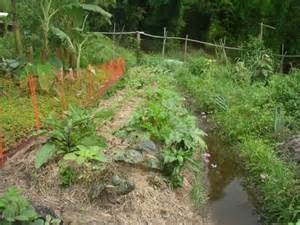
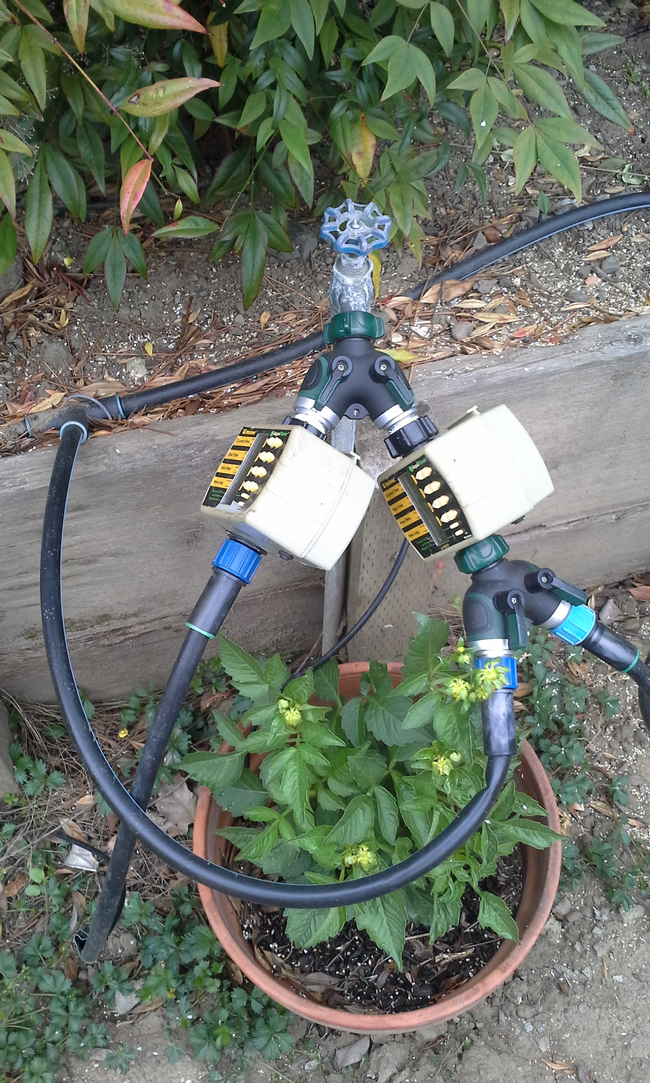
Fast forward to today. California is experiencing a drought and has been for the last few years. Thanks to my parents, I'm ready.
A drip system is the way to go for frugal water use in the garden. I have learned many lessons over the years and had some failures, but mostly my drip-irrigation system has been a success. Although Mom and Dad provided the original supplies and plan, I have had to purchase additional components, which required a learning curve.
Not only are there different systems but some parts have become obsolete and hard to replace. The key to success is simplicity. Another tip: always purchase parts from the same place, or at least know what type of system you have and the diameter of your tubing.
I have attended several irrigation and drought workshops over the years. All of them involved computing water distribution, as in how many gallons per hour each plant needs. Usually my eyes roll back in my head at that point in the presentation. In a small home garden, you can just observe your plants: do they look stressed? If so, check the water distribution. It's either too much or not enough.
I have six stations in my system. Each station consists of a battery-operated timer at the hose bib and half-inch and quarter-inch black hose with micro-sprayers and drippers. I have tried to use only drippers on one line and sprayers on another as they have different pressure requirements, but I do have some systems with both.
Quarter-inch drip tubing with emitters at preset spacing is a great choice and easy to place. I have found that a perforated tube or soaker hose needs a designated line as the pressure in that line dips alarmingly when the soaker hose is in use.
The battery-operated timers are a good option for me because no hard wiring is required. They do have to be protected from the weather. I usually wrap them in clear,sealable plastic bags to allow for easy viewing and to blend into the landscape.
To keep the system from totally commandeering the hose bib, I use a “Y” attachment with shut-off valves. That way, I can use the hose bib for other needs. I only use my drip system from May through October. When autumn rains begin, I disconnect the timers, remove the batteries and store them for the winter.
Keep operating manuals for the timers in a designated place. Many times I have tried to get my system up and running in the spring and can't remember how the timer works.
In early May I set up all the systems for the summer. No matter how much I check first, I always manage to be standing directly on top of a broken sprayer when I turn the system on to test it. The upside is that I have yet to miss a broken sprayer.
I have had some problems with the system over the years, but to be honest, they were mostly operator errors. With much colorful language, I have cut through irrigation lines while digging up beds. Good news: that's an easy fix.
One year I noticed the pressure at the end of one of my systems was non-existent. Upon further investigation, I discovered a buried portion of the system had become disconnected. Not an easy fix.
I had to dig down at least two feet to get to the connection. Note to self: don't bury lines. Just fluff some soil over the lines if an exposed hose disturbs your sensibilities.
Last month, I had to turn off the water to the house because of a plumbing problem. I forgot about it until the next morning, when the first line came on. The tip of a micro-sprayer flew up in the air and went who-knows-where. To avoid this excitement, make sure to “bleed” the lines: with water turned off,detach the system from the hose bib, then turn on the water to release pressure and allow air to escape. Re-attach and you're ready to go.
Upcoming event: The Napa County Master Gardeners'“Down the Garden Path” Garden Tour is Sunday, September 13.The second garden on the tour is the proud recipient of a new drip system. At that site, you can peruse a reference binder with step-by-step instructions for installing drip irrigation.Click http://bit.ly/1fqLJZe for information and tickets.
Workshops: Napa County Master Gardeners will host a workshop on “Good Garden Resources in Print & Tech” on Saturday, July 11, from 9:30 a.m. to 11:30 a.m., at the University of California Cooperative Extension office, 1710 Soscol Avenue, Napa. Who do you trust for dependable gardening information? Where do you look for answers to your horticulture questions? Participants are invited to bring tablets or laptops. Master Gardeners will help you evaluate sources of gardening information, both online and in print. Online registration (credit card only);Mail-in registration (cash or check only).
Napa County Master Gardener will also host a workshop on “Dealing with Drought and Drought-Tolerant Plants” on Saturday, July 11, from 10 a.m. to noon, at Mid-City Nursery, 3635 Broadway, American Canyon. Learn what to do now to help your garden survive on very little water. We will discuss what kinds of plants do best with minimal water. Learn about easy-care, long-flowering, colorful plants for your garden and ones that will attract pollinators. We will also discuss fire-wise plants and gardens. Online registration;Mail-in registration.
Master Gardeners are volunteers who help the University of California reach the gardening public with home gardening information. Napa County Master Gardeners ( http://ucanr.org/ucmgnapa/) are available to answer gardening questions in person or by phone, Monday, Wednesday and Friday, 9 a.m. to Noon, at the U. C. Cooperative Extension office, 1710 Soscol Avenue, Suite 4, Napa, 707-253-4143, or from outside City of Napa toll-free at 877-279-3065. Or e-mail your garden questions by following the guidelines on our web site. Click on Napa, then on Have Garden Questions? Find us on Facebook under UC Master Gardeners of Napa County.
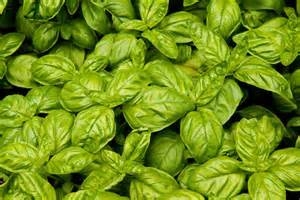
Many favorite herbs are perennial plants. I don't recommend growing these perennials in beds with annual vegetables, because the herbs need to stay in place for several seasons. Among the most common woody perennial herbs are rosemary, marjoram, oregano, sage and thyme. Plant them in a sunny location and don't over water. Trim them regularly to keep them shapely and you can enjoy them for several years. Rosemary plants can become quite large, so give them space or prune them vigorously from time to time.
Some herbs are invasive if not contained. Grow peppermint, spearmint, lemon balm and other mints in containers or in a part of your yard where they won't overtake other plants. These herbs thrive in partial shade in Napa Valley, and they like more water than the woody herbs. I have a happy patch of peppermint growing in a bed surrounded by a stone patio. It serves as a ground cover under a small citrus tree, and the water needs of both seem compatible.
One of my favorite garden herbs is French tarragon, but I learned the hard way that I shouldn't grow it in the vegetable patch. This plant dies back to its roots during cold weather. If grown in a spot that is undisturbed, it re-sprouts in the spring. I had a vigorous tarragon plant in the middle of a vegetable bed one summer. The next spring, before the tarragon sprouted, I cleared the bed of weeds and roots, accidentally including the dormant tarragon. My new tarragon planting is in a mostly ornamental bed close to the house. In the fall, I will mark its spot with a stake so that I don't uproot the plant by mistake.
In contrast, annual and biennial herbs make good neighbors for summer vegetables. Let's look at four of the common ones.
Basil is the queen of herbs in my summer garden. Traditional Italian types are essential for pesto, but there are dozens of other basils to try with different leaf color, leaf size and aroma. I like the purple varieties for their color, and I am also fond of lemon basil for a different but delicious pesto. Basils are frost sensitive, so plant them in late spring after the frost season ends. You can start basil easily from seed, or buy plants from the nursery. Remove flower spikes when they form, and the plants will produce leaves until cold weather kills them. If you have all the basil you need for cooking, you can let some of the plants bloom. The purple varieties, in particular, have pretty flowers.
Parsley is my old reliable. A biennial plant, it will go to seed during the winter, or sometimes at the end of summer. So I set out plants a couple of times during the year to have a fresh supply. There are two main types, curly-leafand flat-leaf, and both grow readily in ordinary garden soil.
You can start parsley from seed, but the seeds take a couple of weeks to sprout. If you don't have time for seed starting, buy a nursery six-pack, which produces plenty of parsley for family use. In my country garden, gophers are a problem, and they seem to like parsley roots. I plant parsley all around the vegetable patch, hoping that if gophers get one spot, they will miss the others and I will not lose my entire parsley crop.
Cilantro is a fast-growing herb essential to Mexican cuisine. It is easy to grow, but it does present one main problem. It grows so quickly from seed to bloom that you must plant it frequently to have a steady supply for the kitchen. It prefers cool weather, so in summer it will do better in a shady spot. Plants don't need much room, so try growing cilantro in the shade of larger summer plants such as tomatoes or pole beans. You can buy seedlings, but if you are a serious cilantro user, buy seeds and sow a few every couple of weeks.
Dill is another annual herb that merits more than one planting, particularly if you want to have dill for pickling in late summer. In my garden, I let some plants go to seed each summer. In April, the seeds will sprout and provide the first fresh leaves of the season. By June, this early dill will be sending up flower heads, so I plant a second crop toward the end of May. This system extends the harvest season and assures that I will have partially ripe heads for pickling when my cucumbers mature.
In summary, annual and biennial herbs can share the beds with vegetables, while perennial herbs need their own space. If you have no garden at all, consider containers. Many herbs do well in pots. Whether you choose to grow one or two or a few types, your summer meals will be much more flavorful.
Workshops: Napa County Master Gardeners will host a workshop on “Good Garden Resources in Print & Tech” on Saturday, July 11, from 9:30 a.m. to 11:30 a.m., at the University of California Cooperative Extension office, 1710 Soscol Avenue, Napa. Who do you trust for dependable gardening information? Where do you look for answers to your horticulture questions? Participants are invited to bring tablets or laptops. Master Gardeners will help you evaluate sources of gardening information, both online and in print.Online registration (credit card only);
Mail-in registration (cash or check only).
Napa County Master Gardener will also host a workshop on “Dealing with Drought and Drought-Tolerant Plants” on Saturday, July 11, from 10 a.m. to noon, at Mid-City Nursery, 3635 Broadway, American Canyon. Learn what to do now to help your garden survive on very little water. We will discuss what kinds of plants do best with minimal water. Learn about easy-care, long-flowering, colorful plants for your garden and ones that will attract pollinators. We will also discuss fire-wise plants and gardens. Online registration; Mail-in registration.
Master Gardeners are volunteers who help the University of California reach the gardening public with home gardening information. Napa County Master Gardeners ( http://ucanr.org/ucmgnapa/) are available to answer gardening questions in person or by phone, Monday, Wednesday and Friday, 9 a.m. to Noon, at the U. C. Cooperative Extension office, 1710 Soscol Avenue, Suite 4, Napa, 707-253-4143, or from outside City of Napa toll-free at 877-279-3065. Or e-mail your garden questions by following the guidelines on our web site. Click on Napa, then on Have Garden Questions? Find us on Facebook under UC Master Gardeners of Napa County.
